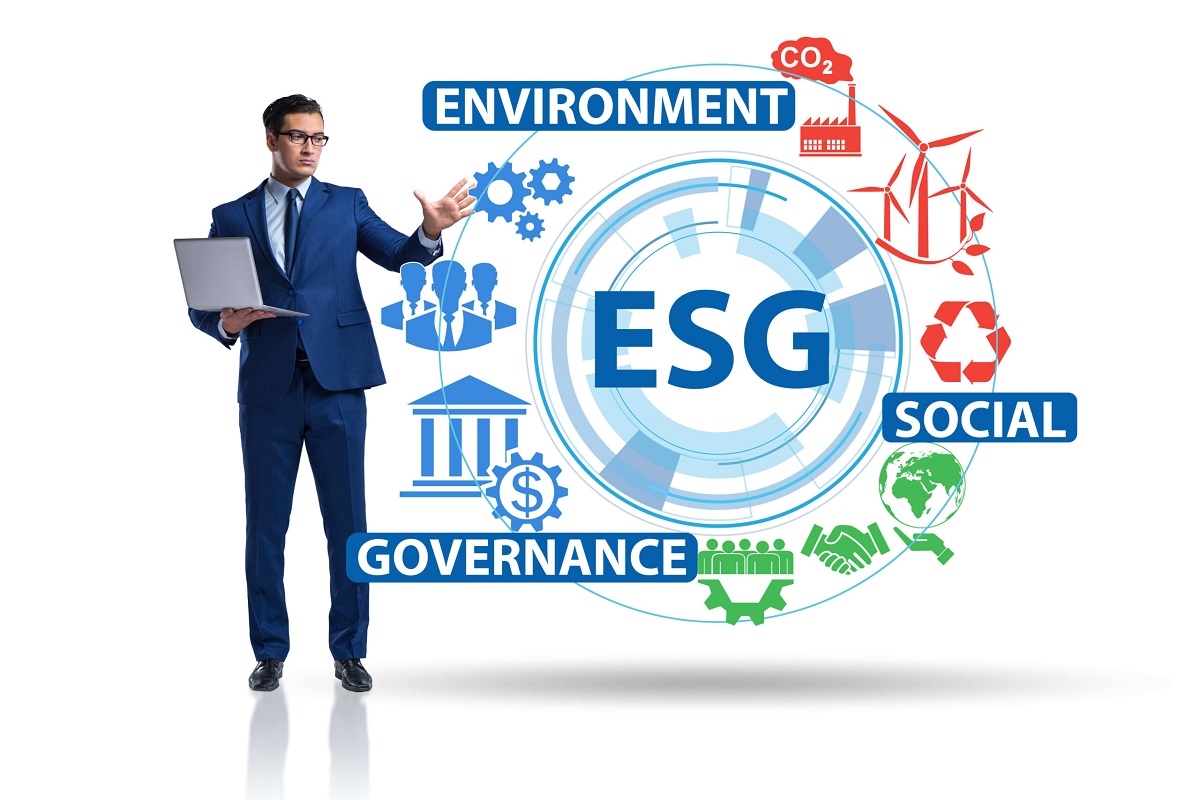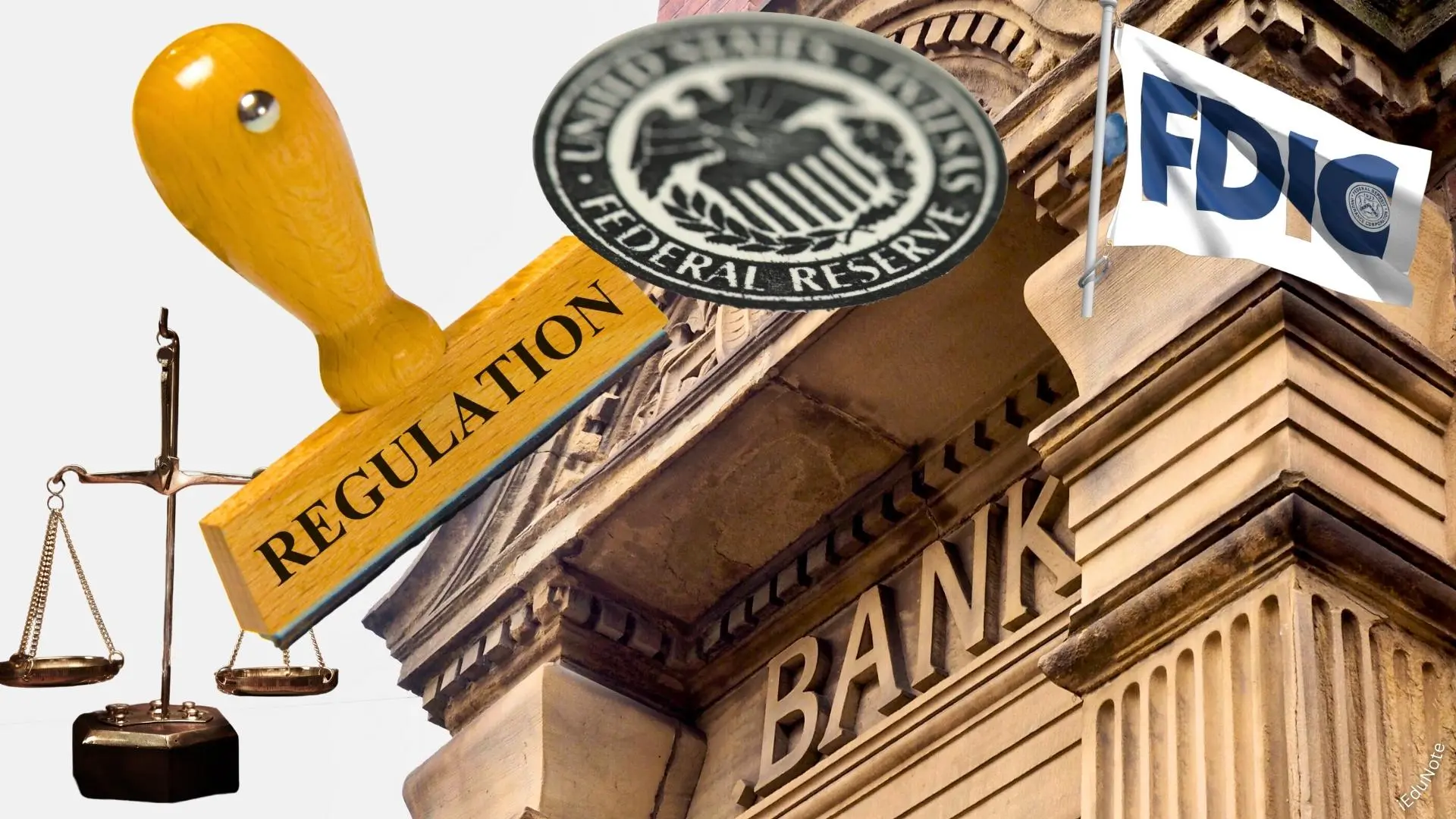Introduction
In today’s rapidly changing world, businesses are increasingly focusing on sustainability and responsible business practices. Environmental, Social, and Governance (ESG) factors have become a key consideration for companies and investors alike. As a result, ESG lending has emerged as a financing solution that aligns with these principles.
ESG refers to the three central factors that measure the sustainability and societal impact of an investment. Environmental factors encompass issues such as climate change, resource depletion, and pollution. Social factors include human rights, labor practices, and community engagement. Governance factors involve the structure and integrity of a company, including board composition and executive compensation.
The importance of ESG cannot be overstated. Climate change, social inequality, and corporate governance failures have had far-reaching consequences. Stakeholders, including customers, employees, investors, and regulators, increasingly demand greater transparency and accountability from businesses.
ESG lending is a financing practice that considers a company’s ESG performance when evaluating loan applications. It allows businesses to secure funding while demonstrating their commitment to sustainable practices and social responsibility. ESG lending incentivizes companies to improve their overall ESG performance by offering favorable terms and conditions.
This article will explore the concept of ESG lending, its benefits and challenges, and provide real-life case studies to illustrate its application. We will also discuss the future prospects of ESG lending and how it is shaping the finance industry as a whole.
What is ESG?
ESG stands for Environmental, Social, and Governance. It is a framework used to assess the sustainability and ethical impact of an investment or business. Each component of ESG represents a different aspect of responsible business practices.
Environmental factors refer to the impact a company has on the environment. This includes its carbon emissions, energy consumption, waste management, and efforts to mitigate climate change. Companies with strong environmental practices aim to minimize their ecological footprint and promote sustainability.
Social factors encompass the company’s impact on society. This includes its treatment of employees, community engagement, human rights policies, supply chain practices, and diversity and inclusion initiatives. Companies with strong social practices prioritize fair labor standards, ethical sourcing, and fostering inclusive and supportive workplaces.
Governance factors relate to the structure and management of a company. It includes issues such as board composition, executive compensation, risk management, shareholder rights, and transparency. Companies with strong governance practices focus on maintaining integrity, accountability, and effective oversight.
The ESG framework provides a holistic approach to evaluating a company’s performance, beyond just financial indicators. It helps businesses assess their impact on the environment, society, and corporate governance, and identify areas for improvement.
Investors are increasingly considering ESG factors in their decision-making process. They recognize that companies with strong ESG practices are more likely to generate sustainable long-term returns and mitigate potential risks. By aligning their investments with their values, investors can contribute to positive change and drive companies to adopt more sustainable practices.
ESG standards can vary across industries, regions, and organizations. There are different rating systems and frameworks available, such as the Global Reporting Initiative (GRI), the Sustainability Accounting Standards Board (SASB), and the Principles for Responsible Investment (PRI), to guide companies in their ESG reporting and disclosure.
In summary, ESG is a comprehensive framework that assesses a company’s sustainability, social impact, and governance practices. It enables businesses to demonstrate their commitment to responsible practices and helps investors make informed decisions that align with their values.
The Importance of ESG
The rise of ESG investing and the focus on sustainable business practices highlight the increasing importance of ESG in today’s world. ESG is no longer just a trend; it has become a crucial aspect of business strategy and decision-making. Here are some key reasons why ESG is important:
1. Risk Management: ESG factors can help identify and manage potential risks to a company’s reputation, operations, and financial performance. By considering environmental and social risks, businesses can proactively address issues before they escalate and take steps to mitigate negative impacts or reputational damage.
2. Long-Term Value Creation: Companies that prioritize ESG practices are more likely to create long-term value for their stakeholders. By addressing environmental challenges, they can reduce costs, increase efficiency, and uncover opportunities for innovation. Socially responsible practices can enhance brand reputation, attract and retain talented employees, and foster customer loyalty.
3. Investor Demand: ESG integration is driven by increasing investor demand for sustainable investments. Investors recognize that companies with strong ESG practices are better positioned to manage risks, adapt to changing regulatory environments, and generate sustainable returns. By considering ESG factors, companies can attract a broader range of investors and access capital from ESG-focused funds.
4. Stakeholder Expectations: Stakeholders, including customers, employees, suppliers, and community members, have higher expectations for businesses to operate sustainably and responsibly. They want to support companies that align with their values and actively contribute to positive societal and environmental outcomes. By responding to stakeholder demands, companies can build trust, enhance brand reputation, and maintain a competitive edge.
5. Regulatory Landscape: Governments and regulators around the world are increasingly implementing policies and regulations aimed at addressing environmental and social challenges. By proactively integrating ESG considerations, businesses can stay ahead of regulatory requirements and ensure compliance, avoiding potential legal and reputational risks.
6. SDGs and Global Challenges: The United Nations’ Sustainable Development Goals (SDGs) provide a universal framework for addressing global challenges, including poverty, inequality, climate change, and environmental degradation. By aligning their practices with the SDGs, businesses can contribute to the achievement of these goals and be seen as positive agents for change.
In summary, ESG is important because it helps businesses minimize risks, create long-term value, meet stakeholder expectations, comply with regulations, and contribute to global sustainability goals. By embracing ESG, companies can position themselves for success in the evolving business landscape and contribute to a more sustainable and inclusive future.
What is ESG Lending?
ESG lending, also known as sustainable lending or responsible lending, is a financing approach that considers a borrower’s environmental, social, and governance performance when evaluating loan applications. It incentivizes companies to improve their ESG practices by offering favorable terms and conditions.
ESG lending goes beyond traditional financial considerations and incorporates non-financial factors into the lending decision-making process. Lenders assess a borrower’s commitment to sustainability, responsible business practices, and corporate governance. They evaluate the borrower’s efforts to minimize environmental impacts, promote social responsibility, and maintain high ethical standards.
ESG lending is designed to encourage positive change and reward companies that demonstrate a strong commitment to sustainability. It aligns the borrower’s financing needs with their ESG objectives, creating a win-win situation for both parties.
Typically, ESG lending involves collaboration between the borrower and the lender to develop and monitor specific ESG targets and performance indicators. These targets may include reducing carbon emissions, promoting diversity and inclusion, enhancing supply chain transparency, or implementing energy-efficient practices.
ESG lending can take various forms, including sustainability-linked loans (SLLs) and green loans. Sustainability-linked loans are tied to specific ESG performance targets, such as reducing water usage, increasing renewable energy generation, or improving labor standards. Green loans, on the other hand, are specifically earmarked for financing environmentally friendly projects, such as renewable energy installations, energy-efficient buildings, or sustainable agriculture initiatives.
ESG lending is gaining popularity in the financial industry as a response to the increasing demand for sustainable financing solutions. It allows companies to access capital while demonstrating their commitment to sustainable practices and responsible business conduct.
Furthermore, ESG lending creates a positive feedback loop. As more companies adopt sustainable practices and seek ESG-linked financing, lenders are compelled to incorporate ESG considerations into their lending policies. This, in turn, contributes to a more sustainable financial system overall.
In summary, ESG lending is a financing approach that considers a borrower’s ESG performance when evaluating loan applications. It incentivizes companies to improve their sustainability practices and offers financial benefits to those that demonstrate a strong commitment to ESG objectives. ESG lending is creating a shift towards a more sustainable financial system and contributes to the broader goals of promoting responsible business practices and mitigating climate change.
How Does ESG Lending Work?
ESG lending is a nuanced approach to financing that incorporates environmental, social, and governance considerations into the lending process. Here are the key elements that characterize how ESG lending works:
Lender Assessment: When evaluating a loan application, lenders assess the borrower’s ESG performance. They examine the company’s sustainability practices, environmental impact, social initiatives, and governance structures. This assessment helps lenders understand the borrower’s commitment to responsible business practices and sustainability goals.
ESG Criteria Integration: Lenders establish specific ESG criteria that borrowers must meet or commit to improving upon to be eligible for favorable lending terms. These criteria vary based on the industry, sector, and goals of the borrower. For example, a renewable energy company may be required to demonstrate a certain percentage of energy generated from renewable sources, while a manufacturing company may need to implement waste reduction initiatives.
Sustainability-Linked Loans (SLLs): One form of ESG lending is sustainability-linked loans (SLLs). These loans are structured with specific ESG performance targets tied to the financial terms and conditions. If the borrower meets or exceeds these targets, they may receive interest rate discounts or other financial incentives. SLLs incentivize companies to continuously improve their ESG performance over the loan’s duration.
Green Loans: Green loans are another form of ESG lending. These loans are specifically earmarked for financing environmentally friendly projects or initiatives. They are used to fund projects that aim to reduce carbon emissions, enhance energy efficiency, or promote sustainable practices. Green loans often benefit from dedicated funding sources or support from specialized institutions.
Collaboration and Monitoring: ESG lending involves collaboration between the lender and borrower. Both parties work together to set specific ESG goals, establish performance indicators, and develop a monitoring mechanism. Regular reporting and verification are conducted to track the borrower’s progress against the agreed-upon targets. This collaboration ensures transparency, accountability, and ongoing assessment of the borrower’s ESG performance.
Impact Measurement: ESG lending also emphasizes the measurement of the borrower’s impact on sustainability and responsible practices. This can include assessing the borrower’s carbon footprint, social impact, and corporate governance practices. Lenders and borrowers collaborate to measure and report on the positive environmental and social outcomes generated by the financed projects or activities.
Market Integration: ESG lending is becoming more integrated into the overall financial market. It is supported by a growing ecosystem of resources, frameworks, and reporting standards that help lenders and borrowers navigate the complexities of ESG considerations. Market integration ensures consistency, comparability, and credibility in evaluating and reporting ESG performance.
In summary, ESG lending works through a comprehensive assessment of a borrower’s ESG performance, integration of specific ESG criteria, the use of sustainability-linked loans or green loans, collaboration between the lender and borrower, and ongoing monitoring and impact measurement. ESG lending encourages borrowers to improve their sustainability practices and offers financial incentives for meeting or exceeding ESG goals.
Benefits of ESG Lending
ESG lending offers a range of benefits for both borrowers and lenders. It aligns financing with sustainable practices, stimulates positive change, and promotes responsible business conduct. Here are some key benefits of ESG lending:
Access to Capital: ESG lending provides borrowers with access to capital that is specifically geared towards sustainable and responsible projects. By demonstrating strong ESG performance and commitment to sustainability, borrowers can attract lenders who prioritize environmental and social considerations. This helps finance initiatives that may otherwise struggle to secure funding through traditional lending channels.
Lower Financing Costs: Companies that demonstrate robust ESG practices may receive more favorable lending terms. Sustainability-linked loans incentivize borrowers to improve their ESG performance, offering opportunities for interest rate reductions or other financial benefits. Lower financing costs make sustainable initiatives more attractive, providing a competitive advantage and improving overall profitability.
Enhanced Reputation: ESG lending supports a positive brand image and reputation. Borrowers committed to responsible practices can communicate their dedication to sustainability to stakeholders, including customers, employees, and investors. By aligning financing with sustainability goals, companies can strengthen their brand reputation, build trust, and differentiate themselves in the market.
Risk Mitigation: Businesses that prioritize ESG practices are better positioned to manage and mitigate risks. ESG considerations help identify potential environmental, social, and governance risks that may impact a company’s operations, reputation, and financial stability. By integrating ESG criteria into the lending process, lenders can ensure that borrowers have taken steps to address these risks, reducing the likelihood of negative events affecting repayment capabilities.
Drive Positive Change: ESG lending promotes positive change by incentivizing borrowers to improve their sustainability performance. By setting specific ESG targets and linking them to financial incentives, lenders motivate borrowers to adopt and maintain responsible practices. This helps drive the transition towards a more sustainable economy and encourages businesses to actively contribute to social and environmental well-being.
Investor Attraction: ESG lending appeals to a growing number of investors who prioritize sustainable investments. A strong commitment to ESG practices can attract a broader range of investors, including those who integrate ESG factors into their investment strategies. By aligning financing with ESG goals, companies can increase their investor appeal and potentially access new sources of capital.
Long-Term Value Creation: ESG lending promotes the creation of long-term value for borrowers. By incorporating sustainability considerations into their business strategies, companies can identify opportunities to reduce costs, increase efficiency, and innovate. Responsible practices can lead to enhanced operational performance, increased customer loyalty, improved employee satisfaction, and a competitive edge in the market.
In summary, ESG lending offers numerous benefits, including improved access to capital, lower financing costs, enhanced reputation, risk mitigation, driving positive change, attracting investors, and creating long-term value. ESG lending creates a positive ripple effect, encouraging responsible business conduct and contributing to sustainable economic growth.
Challenges of ESG Lending
While ESG lending offers many benefits, it also poses several challenges for both lenders and borrowers. These challenges need to be addressed to fully realize the potential of ESG lending. Here are some key challenges:
Standardization and Measurement: One of the major challenges in ESG lending is the lack of standardized frameworks and measurement methodologies. ESG data can be subjective, making it difficult to compare and assess the performance of different companies. A lack of consistent reporting standards and metrics makes it challenging for lenders to evaluate and compare borrowers’ ESG performance accurately.
Data Availability and Quality: Acquiring reliable and consistent ESG data can be a challenge, especially for smaller companies or those in emerging markets. Limited data availability and data quality issues can hinder the effective evaluation of borrowers’ ESG performance. Improving data collection, reporting standards, and transparency is crucial for overcoming this challenge.
Greenwashing Risks: Greenwashing refers to exaggerated or misleading claims about a company’s sustainability practices. It is one of the most significant challenges in ESG lending. Lenders need to carefully assess borrowers’ claims and ensure that their ESG performance is genuinely aligned with sustainable practices. Robust due diligence and verification processes are essential to mitigate the risk of greenwashing.
Creditworthiness Perception: Some lenders may perceive ESG-focused businesses as higher risk due to the potentially higher upfront costs associated with sustainable initiatives. There is a need to educate lenders about the long-term value and risk mitigation benefits of sustainable practices to overcome this perception. Demonstrating a strong business case and tangible financial benefits of ESG initiatives can help address this challenge.
Complexity in Performance Assessment: Evaluating a company’s ESG performance requires a deeper understanding of its industry dynamics, operational processes, and supply chains. Analyzing and assessing complex ESG factors can be challenging for lenders lacking specialized knowledge or resources. Collaboration between lenders, ESG experts, and industry-specific advisors can help navigate this challenge and ensure accurate performance assessment.
Integration into Traditional Lending Practices: Integrating ESG considerations into traditional lending practices can be challenging due to existing frameworks, policies, and risk assessment models. Aligning ESG principles with existing credit risk evaluation processes requires adapting and evolving traditional lending practices. This transition can be time-consuming and may require organizational changes in lenders’ operations and risk assessment methodologies.
Cost of Compliance: Compliance with ESG standards and reporting requirements can impose additional costs on borrowers, especially for smaller businesses or those in industries with complex and resource-intensive supply chains. Addressing this challenge requires providing support, guidance, and resources to borrowers to ensure that the compliance costs do not become a barrier to accessing ESG-linked financing.
Addressing these challenges requires collaboration among lenders, borrowers, industry associations, regulators, and other stakeholders. Standardization of reporting frameworks, improving data availability and quality, and fostering transparency and education are key to unlocking the full potential of ESG lending.
In summary, although ESG lending offers significant benefits, challenges such as standardization, data availability, greenwashing risks, creditworthiness perception, complexity in performance assessment, integration into traditional lending practices, and compliance costs need to be addressed to create a more robust and sustainable ESG lending ecosystem.
ESG Lending in Action: Case Studies
Several real-life case studies demonstrate the effectiveness and impact of ESG lending in driving positive change and fostering sustainable practices. These examples showcase how companies across various industries have leveraged ESG lending to finance their sustainability initiatives:
1. Unilever: Unilever, a multinational consumer goods company, accessed sustainable financing in the form of a sustainability-linked loan. This loan was linked to the company’s progress in meeting its ambitious sustainability targets, including reducing greenhouse gas emissions from its operations and improving water and waste management. By aligning its financing with its sustainability goals, Unilever was able to drive progress towards its ESG objectives while benefiting from improved financing terms.
2. Ørsted: Ørsted, a Danish renewable energy company, secured a green loan to finance the development of offshore wind farms. The loan was specifically earmarked for environmentally friendly projects, aligning with Ørsted’s commitment to clean energy generation. The company’s strong ESG performance and dedication to sustainable practices made it an attractive borrower for lenders interested in supporting renewable energy initiatives.
3. Toyota: Toyota, a global automobile manufacturer, obtained a sustainability-linked loan that rewarded the company for achieving certain carbon reduction targets. This loan incentivized Toyota to invest in more sustainable manufacturing practices and further innovate in developing electric vehicle technologies. The financial benefits tied to meeting sustainability goals motivated Toyota to continuously improve its ESG performance and reduce its environmental impact.
4. Danone: Danone, a multinational food and beverage company, utilized a sustainability-linked loan to fund its various sustainability initiatives. The loan was tied to the company’s progress in meeting ESG metrics, such as reducing water consumption and increasing the use of renewable energy. By linking its financing to its sustainability goals, Danone was able to access capital that explicitly supported its commitment to responsible business practices.
5. International Finance Corporation (IFC): The IFC, a member of the World Bank Group, has been at the forefront of ESG lending. It has contributed to the growth of sustainable finance by providing loans and investments to companies in emerging markets that demonstrate strong ESG performance. The IFC’s investment portfolio includes projects that focus on renewable energy, sustainable agriculture, and climate change mitigation. These investments have not only driven sustainability but also supported economic development in these regions.
These case studies highlight the positive impact of ESG lending on companies’ ability to fund their sustainability initiatives, accelerate progress towards ESG goals, and attract capital from lenders who value responsible business practices. ESG lending serves as a catalyst for transformative change, enabling companies to integrate sustainability into their core operations and drive positive environmental and social outcomes.
In summary, these case studies illustrate the tangible benefits of ESG lending, enabling companies to align their financing with sustainability objectives, drive innovation, and contribute to a more sustainable future.
The Future of ESG Lending
The future of ESG lending looks promising as sustainable finance continues to gain momentum. Here are some key trends and developments shaping the future of ESG lending:
1. Growing Demand: The demand for sustainable financing solutions is expected to continue to rise. As companies and investors increasingly recognize the importance of ESG considerations, there will be a greater emphasis on integrating ESG factors into lending decisions. This will further drive the mainstream adoption of ESG lending across different industries and regions.
2. Standardization and Metrics: Efforts towards standardizing ESG reporting frameworks and developing consistent metrics are underway. Enhanced standardization will enable better comparison and evaluation of ESG performance across companies, making it easier for lenders to assess borrowers’ sustainability practices. Standardization will also facilitate the growth of ESG-linked financial products and instruments.
3. Innovation in Financial Products: ESG lending is expected to give rise to new financial products that align with sustainable objectives. This includes the emergence of sustainability-linked loans, green bonds, and impact investments. These products will provide borrowers with diverse options to access capital that supports their ESG goals while attracting investors interested in sustainable investments.
4. Technological Advancements: Technology will play a crucial role in advancing ESG lending. The use of data analytics, artificial intelligence, and blockchain technology will improve data collection, analysis, and verification processes. These technological advancements will enhance the efficiency and accuracy of ESG assessments, enabling lenders to make more informed lending decisions.
5. Regulatory Support: Government policies and regulations are aligning with sustainability goals, creating a favorable environment for ESG lending. Regulatory initiatives are promoting the integration of ESG factors into lending practices and requiring better disclosure and reporting of sustainability performance. Increased regulatory support will further incentivize companies to pursue sustainable financing options.
6. Impact Measurement and Reporting: Focus on impact measurement and reporting will intensify in ESG lending. Borrowers will need to demonstrate the positive environmental and social outcomes generated by their financed projects, providing transparency and accountability to lenders, investors, and stakeholders. Improved impact measurement methodologies and reporting standards will support this process.
7. Collaboration and Partnerships: Collaboration among stakeholders will be essential for the future of ESG lending. Lenders, borrowers, regulators, industry associations, and investors will need to collaborate to address challenges, share best practices, and drive industry-wide adoption of sustainable finance principles. Partnerships between financial institutions and ESG specialists will support the development of innovative solutions and expertise in assessing ESG performance.
In summary, the future of ESG lending holds tremendous potential. The increasing demand for sustainable finance, standardization efforts, technological advancements, regulatory support, impact measurement focus, and collaboration across industries will shape the evolution of ESG lending. As the sustainability agenda continues to gain prominence, ESG lending will play an instrumental role in funding sustainable initiatives and driving the transformation towards a more sustainable and inclusive economy.
Conclusion
ESG lending has emerged as a powerful tool for promoting sustainable business practices and responsible finance. It incorporates environmental, social, and governance factors into the lending decision-making process, aligning financing with sustainability objectives. Throughout this article, we have explored the concept of ESG lending, its importance, and its impact on businesses and the financial industry.
ESG lending offers numerous benefits, including improved access to capital, lower financing costs, enhanced reputation, risk mitigation, driving positive change, attracting investors, and creating long-term value. It provides companies with the opportunity to fund their sustainable initiatives while demonstrating their commitment to responsible business conduct.
However, ESG lending also comes with its challenges. Standardization and measurement of ESG performance, data availability and quality, greenwashing risks, creditworthiness perception, complexity in performance assessment, integration into traditional lending practices, and compliance costs are among the challenges that need to be addressed for the broader adoption of ESG lending.
The future of ESG lending looks promising, with growing demand, standardization efforts, innovation in financial products, technological advancements, regulatory support, and increased focus on impact measurement and reporting. Collaboration among stakeholders will be crucial in driving the development and widespread adoption of sustainable finance practices.
ESG lending is not just a passing trend; it is becoming an integral part of the financial landscape. As the global focus on sustainability and responsible business practices intensifies, ESG lending will play a pivotal role in financing the initiatives that contribute to a more sustainable and inclusive future.
By integrating ESG considerations into lending decisions, financial institutions can drive positive change, support responsible businesses, and contribute to the achievement of sustainable development goals. Similarly, companies that embrace ESG practices will not only attract capital and benefit from favorable financing terms but also strengthen their brand reputation and establish themselves as leaders in their industries.
In summary, ESG lending has the potential to reshape the financial industry and drive the transition towards a more sustainable and responsible economy. It provides a pathway for companies to access funding that aligns with their sustainability objectives, while lenders can promote positive change and create a positive impact on the environment and society. Through continued collaboration and ongoing commitment, we can harness the power of ESG lending to create a better future for businesses and the planet.

























